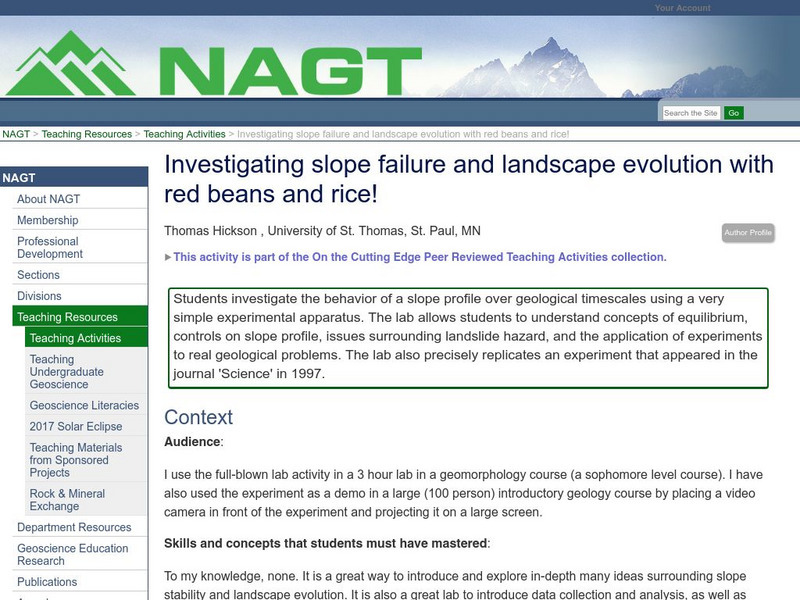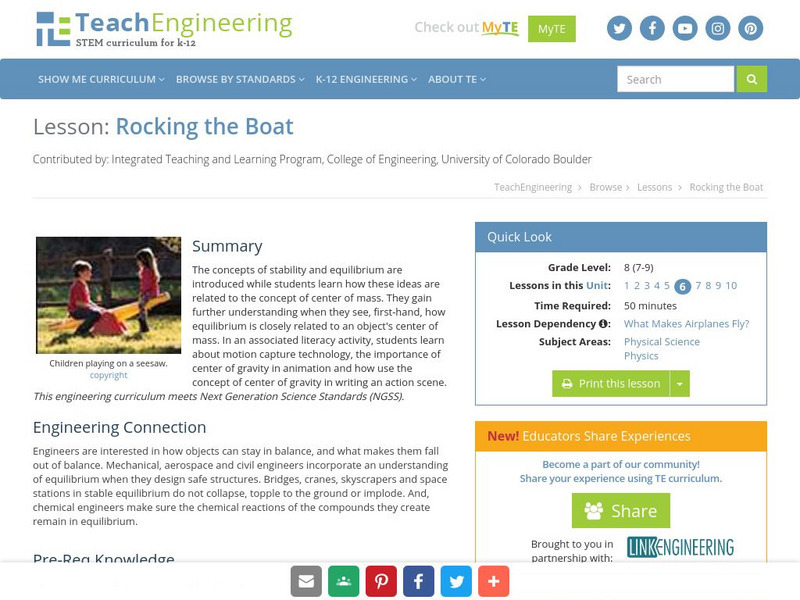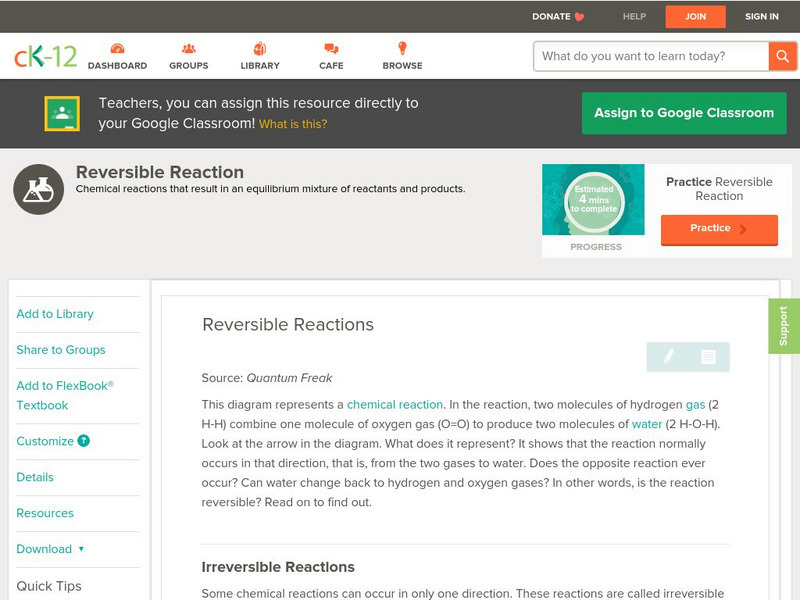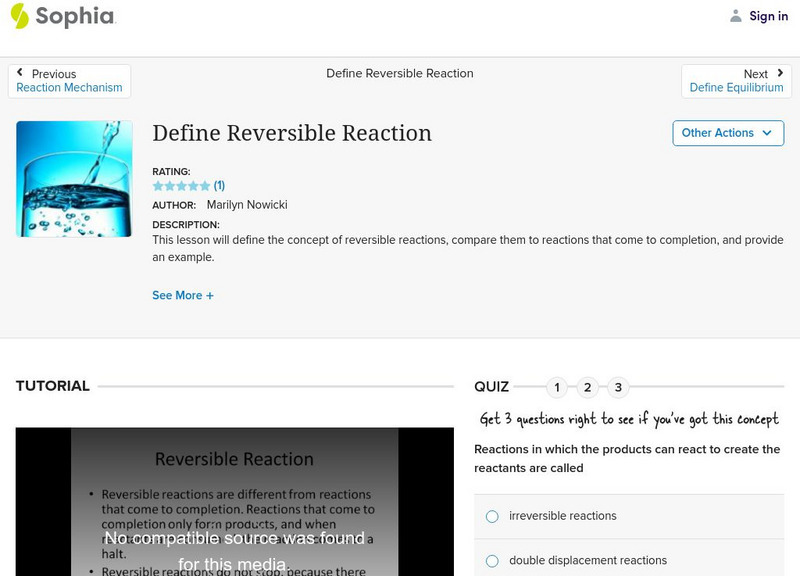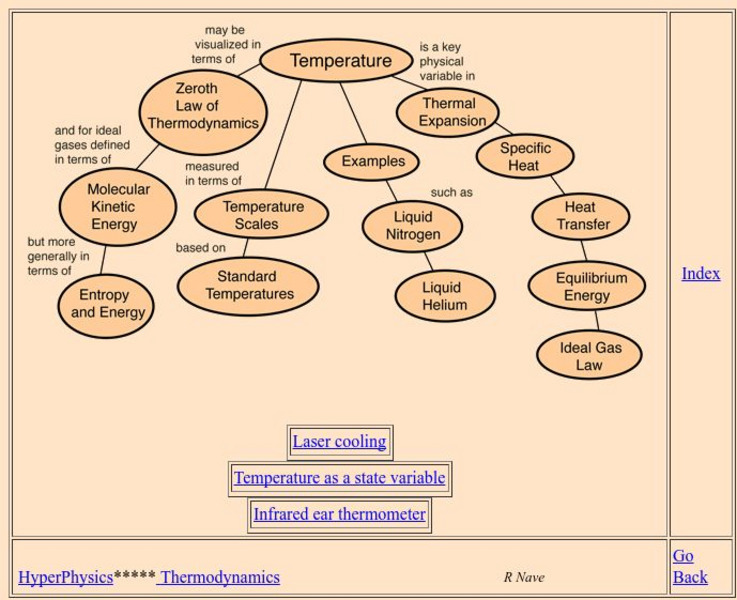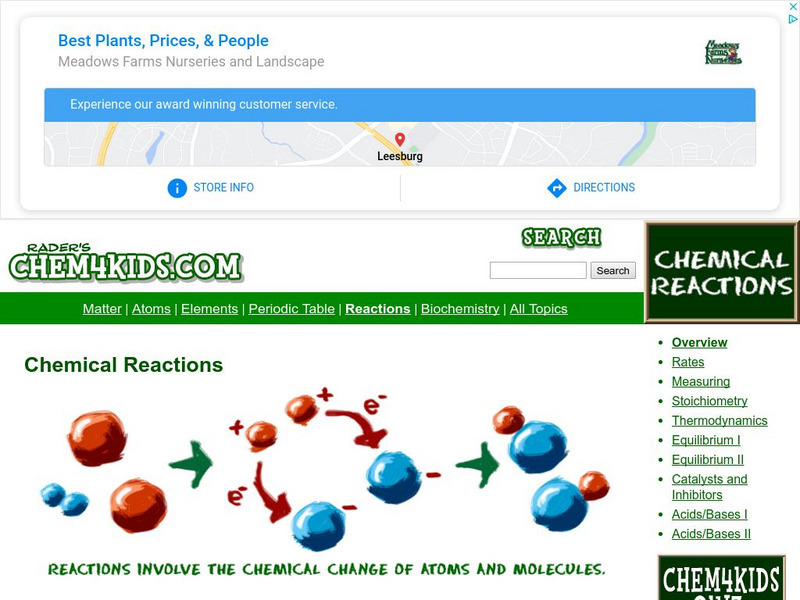Sophia Learning
Sophia: Mechanical Equilibrium: Lesson 1
This lesson introduces the concept of mechanical equilibrium. It is 1 of 2 in the series titled "Mechanical Equilibrium."
National Association of Geoscience Teachers
Nagt: Investigating Slope Failure and Landscape Evolution
Students investigate the behavior of a slope profile over geological timescales using a very simple experimental apparatus. The lab allows students to understand concepts of equilibrium, controls on slope profile, issues surrounding...
TeachEngineering
Teach Engineering: Tightrope Trials
To learn about the concept of center of mass, students examine how objects balance. They make symmetrical cut-outs of different "creatures" and experiment with how they balance on a tightrope of string. Students see the concept of center...
TeachEngineering
Teach Engineering: Perching Parrot
Students explore the concepts of center of mass and static equilibrium by seeing how non-symmetrical objects balance. Using a paper cut-out shape of a parrot sitting on a wire coat hanger, they learn that their parrot exists in stable...
TeachEngineering
Teach Engineering: Rocking the Boat
The concepts of stability and equilibrium are introduced while students learn how these ideas are related to the concept of center of mass. They gain further understanding when they see, first-hand, how equilibrium is closely related to...
CK-12 Foundation
Ck 12: Physical Science: Reversible Reactions
[Free Registration/Login may be required to access all resource tools.] Reversible and irreversible reactions and equilibrium.
CK-12 Foundation
Ck 12: Life Science: Homeostasis
[Free Registration/Login may be required to access all resource tools.] When you walk outside on a cool day, does your body temperature drop? No, your body temperature stays stable at around 98.6 degrees Fahrenheit. Even when the...
Sophia Learning
Sophia: Define Reversible Reaction
Find out what a reversible reaction is in this narrated screencast. Also learn how this is different from a reaction that comes to completion. [2:48]
Soft Schools
Soft Schools: Physics Quizzes: Force, Mass Acceleration
Assess your understanding of force, mass and acceleration and the relationship amongst the three with this interactive multiple choice quiz. Immediate feedback is offered.
Simon Fraser University
Chem1 Virtual Textbook: All About Chemical Equilibrium
Acting as an overview from the General Chemistry Virtual Textbook, this site explores a range of topics related to chemical equilibrium including chemical change, the Le Chatelier principle, the equilibrium quotient, and more.
University of Colorado
University of Colorado: Ph Et Interactive Simulations: Reaction & Rate Simulation
Students will learn what causes reactions and what affects the rates of reaction through data collected by conducting several simulated experiments.
Sophia Learning
Sophia: Changes in Concentration at Equilibrium
This lesson will provide examples of how to identify an equilibrium shift due to a change in concentration of either reactants or products.
Georgia State University
Georgia State University: Hyper Physics: Temperature Concepts
An indexing page which includes links to a wealth of pages detailing the conceptual meaning of temperature. A hypertext format allows the visitor to quickly gain access the desired information.
Chem4kids
Chem4 Kids: Reactions
This site provides a detailed overview of chemical reactions. Content explores what a reaction is, as well as different types of reactions, reaction rates, how to measure compounds to create a reaction, and "stuff" you can add to a...
Other
New Mexico State University: Chemical Equilibrium
A one page tutorial which teaches the viewer how to predict and write equilibrium expressions and use them to calculate equilibrium concentrations. Discusses Le Chatelier's Principle.
Shodor Education Foundation
Shodor: Equilibrium
A presentation of the basics of chemical equilibrium, covering equilibrium expressions, Le Chatelier's principle, and sample calculations.
Sophia Learning
Sophia: Changes in Volume/pressure at Equilibrium
A guided screencast which explains how to identify a shift in equilibrium based on changes in volume or pressure. [6:15]
Physics Aviary
Physics Aviary: Practice Problems: Gas Partition Problem Level 2
Determine the temperature required to keep a piston in equilibrium. You must use information about the speed of the atoms in the left hand chamber to help you find the equilibrium pressure.
Physics Aviary
Physics Aviary: Practice Problems: Gas Partition Problem
Determine the temperature required to keep a piston in equilibrium.
Physics Aviary
Physics Aviary: Practice Problems: Hydraulic Lift Problem
Determine the difference in pressure that leads to the motion of masses in an hydraulic lift and the difference in height when the piston reaches equilibrium.
Physics Classroom
The Physics Classroom: Newton's Laws: Balanced and Unbalanced Forces
Students study several free-body diagrams to better understand balanced and unbalanced forces.
Physics Classroom
The Physics Classroom: Vectors: Forces in Two Dimensions:equilibrium and Statics
Through examples and practice problems, this interactive tutorial helps students understand forces that are in a state of equilibrium with a net force of zero.
Physics Classroom
The Physics Classroom: Circular and Satellite Motion: Weightlessness in Orbit
Through illustrated examples and practice problems, this interactive physics tutorial helps students clear up their possible misconceptions about weightlessness.
Physics Classroom
The Physics Classroom: Waves: The Anatomy of a Wave
Students explore the characteristics of both transverse and longitudinal waves.



